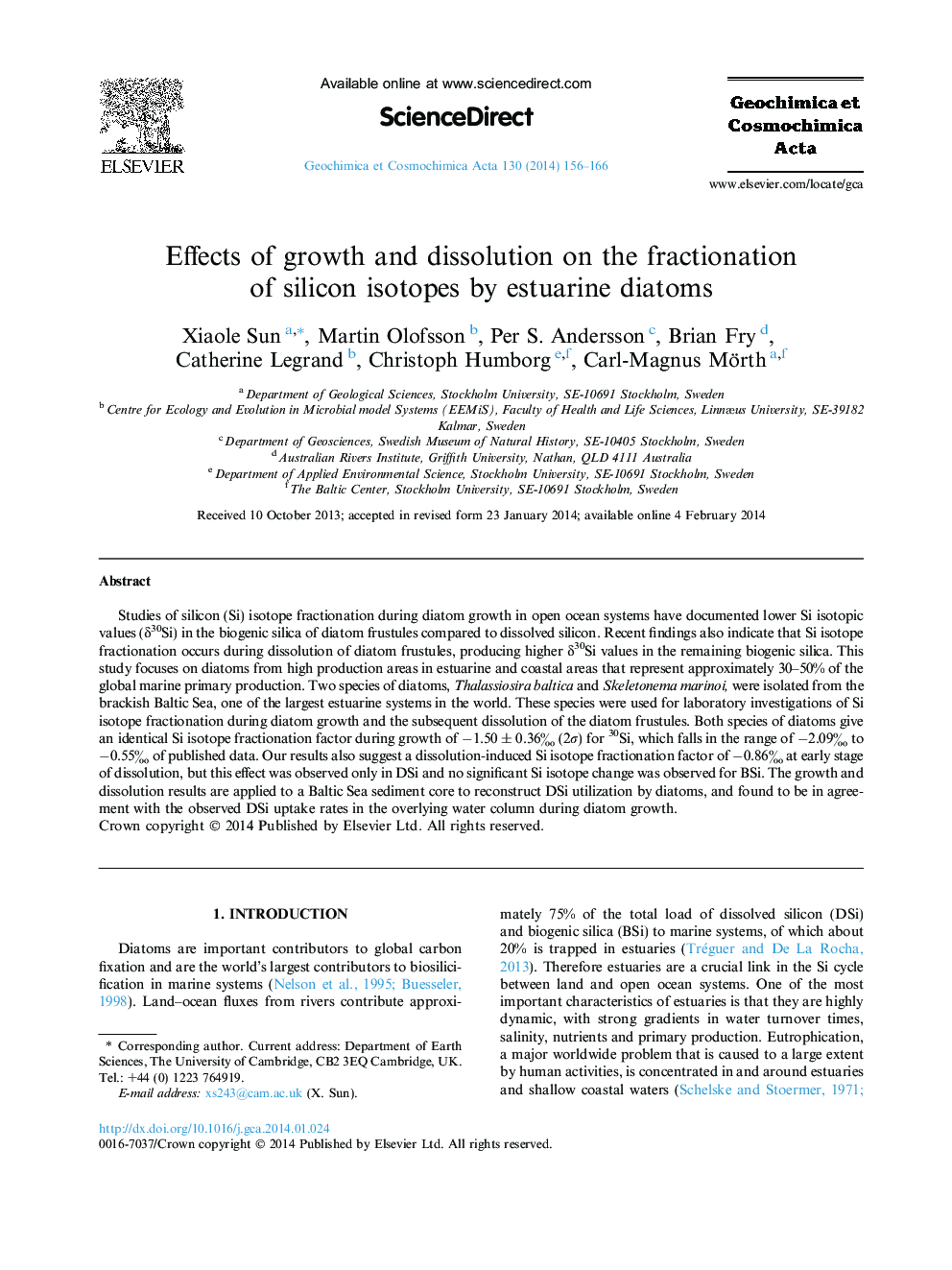| Article ID | Journal | Published Year | Pages | File Type |
|---|---|---|---|---|
| 4702168 | Geochimica et Cosmochimica Acta | 2014 | 11 Pages |
Studies of silicon (Si) isotope fractionation during diatom growth in open ocean systems have documented lower Si isotopic values (δ30Si) in the biogenic silica of diatom frustules compared to dissolved silicon. Recent findings also indicate that Si isotope fractionation occurs during dissolution of diatom frustules, producing higher δ30Si values in the remaining biogenic silica. This study focuses on diatoms from high production areas in estuarine and coastal areas that represent approximately 30–50% of the global marine primary production. Two species of diatoms, Thalassiosira baltica and Skeletonema marinoi, were isolated from the brackish Baltic Sea, one of the largest estuarine systems in the world. These species were used for laboratory investigations of Si isotope fractionation during diatom growth and the subsequent dissolution of the diatom frustules. Both species of diatoms give an identical Si isotope fractionation factor during growth of −1.50 ± 0.36‰ (2σ) for 30Si, which falls in the range of −2.09‰ to −0.55‰ of published data. Our results also suggest a dissolution-induced Si isotope fractionation factor of −0.86‰ at early stage of dissolution, but this effect was observed only in DSi and no significant Si isotope change was observed for BSi. The growth and dissolution results are applied to a Baltic Sea sediment core to reconstruct DSi utilization by diatoms, and found to be in agreement with the observed DSi uptake rates in the overlying water column during diatom growth.
